 A little yellow slot car with wings. That’s how one visitor to Sonex engineer Pete Buck’s hangar described the company’s Xenos motorglider. That’s a strange thing to say about an airplane with a 45-foot wingspan and a length of 19 feet 9 inches. But on closer inspection (and following a flight in the new design), I think that visitor may well have captured its spirit.
A little yellow slot car with wings. That’s how one visitor to Sonex engineer Pete Buck’s hangar described the company’s Xenos motorglider. That’s a strange thing to say about an airplane with a 45-foot wingspan and a length of 19 feet 9 inches. But on closer inspection (and following a flight in the new design), I think that visitor may well have captured its spirit.
Why? Well, the bright yellow paint job is the obvious reason, and the fact that the Xenos sits close to the ground. But this aircraft is no ground hugger—it wants to fly.
The Xenos and its short-wing brothers—the Sonex and the Waiex—did not burst onto the homebuilt scene from nowhere. Sonex, Ltd., the company that designed and produces kits for the Xenos, is the creation of designer John Monnett, who runs the company with his wife, Betty, son, Jeremy, Pete Buck and a few other employees.
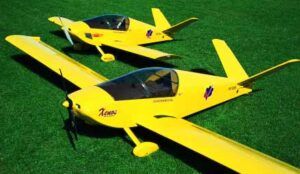
Genesis of the Xenos
In 1971, Monnett debuted his first commercial homebuilt design—the Sonerai, a Formula V, VW-powered racer—and he quickly followed with a two-seat version. Both were of mixed construction, featuring an aluminum wing and a steel-tube fuselage covered with cloth. Their longevity speaks to the popularity of the designs; plans for both are still available today from Great Plains Aircraft Supply.
Monnett’s interest in soaring led to the design of the Monerai, a compact steel-tube sailplane with a fiberglass pod, aluminum wing and a V-tail. The Moni motorglider followed and helped to establish the basic architecture for the current line of all-aluminum aircraft.
The Xenos evolved as an idea for a two-seat version of the Moni. Demand from Europe and the impending Light- Sport Aircraft (LSA) category in the U.S. led Monnett to release the short-wing, speedier Sonex design first. That design, with a low price tag, sporty perform- ance and an easy-to-build kit, took off. Today, there are 83 flying and nearly 700 more under construction just 7 years after the design was introduced.
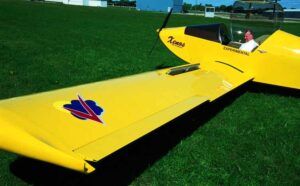
Even as the industry concentrated on the LSA rule for the past few years, Monnett and Buck believed in the potential of the motorglider. While the majority of potential LSA consumers might not be interested in a motorglider, I think a close examination of the Xenos will change their minds.
“But why,” you ask, “should I pay more for a slower, harder-to-store long- wing Xenos when all three current Sonex designs are LSA compliant?” A few reasons:
- You can shut the engine off and enjoy the wonders of soaring. It may have a motor up front, but this aircraft truly is a glider. For powered aircraft pilots, think of the safety benefits of having a 24:1 glide ratio with the engine off. From 8000 feet, your still-air glide is more than 35 miles. It’s a lot quieter with the engine off. And with practice soaring you might enjoy the challenge of flying using as little fuel as possible. A motorglider provides a chance to enjoy engine-out flight; in a short-wing speedster, that qualifies as a situation to avoid.
- An additional plus for some is that the medical requirements for motorgliders are even less restrictive than for the new Sport Pilot license. If you have a glider license with a motor- glider endorsement (or if you decide to earn one), you can self certify your medical. The time and cost of dealing with the FAA on medical issues has put many healthy pilots out of the air—the motorglider route is a legal way to fly over the red tape.
Strapping In
For this article, my mission was to visit with Buck for a chance to sample the Xenos in flight. Buck’s motorglider, N212XS, is based at Mountain Valley Airport in Tehachapi, California. Situated in a pass where the southern end of the Sierra Mountains bumps into the Tehachapi Mountains, it is one of Southern California’s best soaring sites. The air from the San Joaquin Valley battles with the Mojave Desert air. Windmills farm the air for electricity.
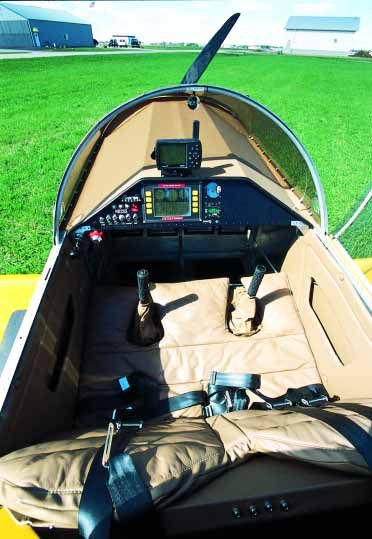
The Sailplane Homebuilders Association holds its western workshop in Tehachapi once a year. It was during that event that I hooked up with Roger Tanner, a CFI-Glider, to fly Buck’s Xenos. Tanner, like Buck, has a real job besides playing with cool kit airplanes. Tanner flies for the test pilot school at Edwards Air Force Base, and Buck is an engineer at Lock- heed Martin. Buck’s day job is why his six-cylinder, 120- hp Jabiru-powered Xenos is not back in Oshkosh at the Sonex factory with its four-cylinder, 80-hp AeroVee-powered brother.
The Xenos sits low to the ground on its titanium-rod taildragger landing gear, and it’s quite easy to get into under the side-hinged canopy. The Y tail is the only obviously unusual feature on the airframe. The normal V tail with ruddervators is supplemented by a small rudder hinged to the rear of the fuselage. When you can’t see it, the tail seems completely normal. Given the restraints of single plane curves, where compound curves are restricted to the extremities—the tips, cowling and canopy, for example—it is an attractive aircraft. It looks especially good in yellow, and I think the color was an inspired choice (more on that later).
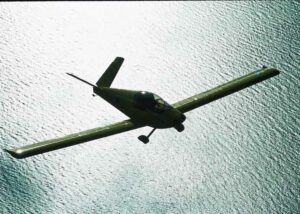
Taxi and Takeoff
Reaching for the Xenos checklist, Tanner reminded me that the use of a checklist is essential, even in the simplest glider. Twenty seconds later, we were fired up with the dual ignition checked and ready to taxi. Getting my headset on was about the most difficult part of the pre-takeoff checks. Those are needed under power, as the Xenos is a sheet aluminum airplane with an unmuffled, air-cooled engine.
Taxiing was a piece of cake. The low c.g., low wings, light weight and direct steering make ground handling simple even to a newcomer. And takeoff was just as straightforward. It required a little effort with the feet to keep the nose straight, and we were off the run- way and climbing after 3-4 seconds. We set up for a cruise climb to 10,000 feet at about 70 mph and headed for the mountains south of the airport where we would have a 2000-foot clearance to shut the engine down and look for lift.
Soaring and Stalling
We had encountered bumps during the climb and pulled the throttle back at altitude to bring the engine temperatures down from the climb conditions. After less than a minute, we shut the engine down and stopped the prop. The 60×52 fixed-pitch Sensenich prop, which is so small it would not look out of place on a giant scale RC model, did not seem to cause much drag. That saves the expense of a feathering prop. After a few minutes, Tanner remembered: “We can take our headsets off.”
The thermals seemed quite small and I (a bit out of practice) had trouble centering and getting full turns in lift. What was more interesting was that I did not have to think about flying the air- plane. It felt so natural and comfortable that after only flying it for 10 or 12 minutes I was able to concentrate wholly on catching thermals.
We held our own for a while and then did some stalls. A soft but distinct burble occurs as the wing starts to stall. With the wings level it seems to hang in a mush with the ailerons still effective. With a large bank angle, the nose finally dropped, but getting the stick off the rear stop got us flying again.
Tanner did the stall and spin testing of the Xenos, and there is a link to his report on the Sonex web site. My impression is that it would take an exceptionally dumb or determined pilot to get into stall/spin trouble with the Xenos.
I used to own an HP-18, a high- performance sailplane built from a kit. It was designed for the 15-meter racing class. On one flight, I was thermaling at 14,000 feet and the top wing let go. I was flying with a forward c.g. and was able to recover normally; I re-entered the thermal and stalled it again. I was not on oxygen and therefore no doubt slower and dumber than usual, but there was no warning of those stalls. I asked myself, “Is it the airplane or is it you?”
As I burned off some altitude, I made the decision to sell the HP-18 to someone who would fly it more often and was a more skilled pilot. It is one thing to fall out of a thermal at 14,000 feet, quite another to do the same at 200 or 300 feet above a mountain while scratching for lift. In a pure high-speed aircraft, you would only get near a stall in the landing flare. But in a glider, the slower and tighter you can turn, the better you will climb. You’re often racked over at the edge of a stall trying to ride a boiling, rolling and turbulent mass of hot air heading for a cloud base. The Xenos scores a big plus with me on its low- speed handling qualities.
Cruise and Landing
To take a look at cruise flight we head- ed north over the mountains north- bound to Lake Isabella at 10,500 feet. We were running 130 mph true at about 6.5 gph. According to Tanner, it’s possible to knock about 1 gph off the fuel burn by leaning. Company-provided specs for the Xenos show the aircraft as 20-30 mph slower compared to the Sonex and Waiex, depending on engine and flight conditions.
I let the Xenos fly itself hands-off for a while. The air was still quite bumpy, and I was impressed by its stability. We felt the bumps, the airplane went up and down with the air, but the nose stayed pointed where I wanted it. No wandering, wobbling or tail wagging. Like a slot car with wings.
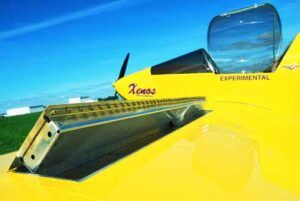
On the way back to the field I tried some of what I call power assisted soaring. I set the engine for level flight at about 70 mph, slow down and climb in lift and push the nose down and go fast through sink. It’s called dolphining in sailplanes; when conditions are strong, remarkably high cross-country speeds (125 mph plus) can be achieved with no engine at all. I know it offends the soaring purists, but the Xenos can mimic pure sailplane performance by running its engine a bit above idle. It is also a much less expensive and a more versatile aircraft than a pure sailplane, if not as sexy.
As we approached the airport, Tanner instructed me to set up for a power-off landing on the power runway. (Mountain Valley Airport has two runways and patterns, one for power on the south side and the other for gliders on the north.) This apparent contradiction confused me long enough to spot a tow plane ahead of us. We were engine off, ready to turn base with half spoilers out. But in the space of about 1.5 seconds, Tanner closed the spoilers, pushed the start button and we were in a climb- ing turn to get more space between us and the tow plane. Try that in a pure glider or a self-launching sailplane that has to unfold its propulsion system from its back before the prop can turn.
Landing was another non-event. “Half spoiler and keep lined up and touch down at about 55 mph,” Tanner told me. That’s about 10 mph above the listed stall speed. I think it is a function of the low deck angle of the Xenos on its landing gear. That low angle makes visibility and handling on the ground easier but does increase the minimum takeoff and touchdown speeds. The takeoff performance is so good that it is a non-issue, and if you really had to land at minimum speed you could touch tailwheel first. As it was, we did not have to use brakes and as we rolled to the turn off, Tanner re-started the engine to taxi back to Buck’s hangar.
I did not want to leave that little yellow bird.
The Kit
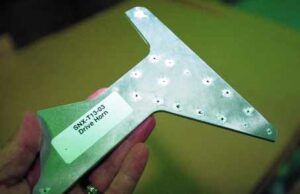
Simplicity of construction and efficient performance—through lightweight, compact design—seem to have been given equal emphasis during the development of the Xenos. The use of flat-wrap skins is an example, even extending to the Lexan windshield
portion of the canopy. This is typical of the company’s desire to make the build process easier and less expensive.
The Xenos is available in kit form and comes with construction plans that are regarded as among the best in the industry. The kit costs $17,985. Or, you can opt to build the Xenos from scratch by purchasing plans only ($600). If you choose the 80-hp AeroVee engine kit ($5695) from Sonex, it’s reasonable to aim for completing the aircraft for less than $30,000, depending on paint and instrument choices. The 120-hp Jabiru engine will add approximately $10,000 to the build cost.
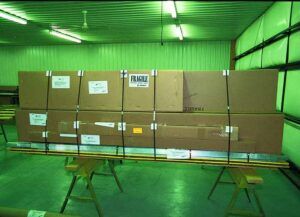
A weekend builder’s workshop at Sonex’s facility in Oshkosh is included in the kit price to help get you started. I would recommend that anyone seriously interested in any of the Sonex aircraft attend the workshop.
The kit appears to be unusually complete—most of the more difficult operations are completed for the builder. The welded parts are complete and powder coated. The skins are laser cut, ribs, bulkheads and channels are
formed and pilot holes marked. The builder has to trim, fit, drill and rivet and otherwise assemble the airframe. The factory claims less than 1000 hours build time from the kit, an estimate based on experience with Sonex kit builders. As ever, build time is highly elastic and depends on the skill and organization of the builder.
“We try to make our kits easy and economical to build for the first time builder,” Monnett said. “They are also economical to own and give good performance while being suitable for low- time pilots.”
Final Impressions
I think John Monnett and company have nailed it with this aircraft design. Most sport pilots end up back at their home airport after a typical flight and do the occasional long cross-country. For many of those pilots, giving up some cruise speed for the flexibility, economy and added safety of an air- craft that can glide so far may be the right choice.
Is it a perfect airplane? No. All airplanes are compromises flying in close formation. It is not an airplane for two really large people, although it can be built as a heck of a single place for the XXXL pilot. It could be quieter under power.
The only serious competition for the Xenos is the Europa motorglider, which went off the market when Europa closed its doors a few months ago. The Europa features a bigger cabin but is more expensive to build (the kit alone costs $33,300) being a molded composite kit based on four-stroke Rotax engines and requiring a full- feathering prop to get its best performance. It remains to be seen whether it reappears on the market.
If I could work out the details, I would be building a Xenos right now. It is a near perfect aircraft for me. I could base it at an airport 20 minutes from my house instead of driving an hour and a half to the glider port. No tow planes to wait or pay for. I could explore soaring the Sierras with little fear of an out landing while visiting friends in Lake Tahoe.
But why that bright yellow paint job? It is a good color for staying visible, but I think that’s only part of it. I think the Xenos could be the J-3 Cub of the 21st century. Not the number flying, but in terms of cost and ease of construction for the homebuilder and good, honest handling qualities.
With good speed on modest-size engines for economy of operation, Sonex has produced the right plane for the time. Most of the company’s customers will be seduced by the bigger cruise speed numbers of the shorter- wing members of the tribe as they share many of the same good qualities of the Xenos. But some may tire of boring holes in the sky and will want to try an aircraft where they can shut the engine off in flight—intentionally.
For more information on the Xenos motorglider, AeroVee engine or any other of Sonex’s products, visit sonexaircraft.com.
Photos: Richard VanderMeulen.

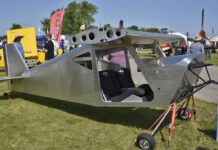
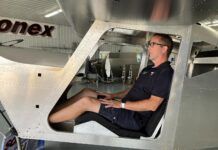

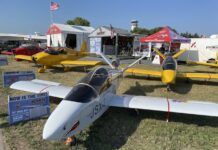


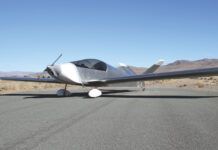




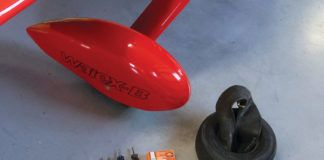
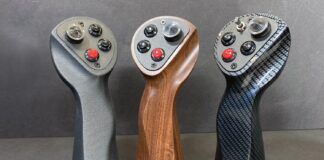
I am looking for information about what I remember being a Sonex.
It was a single seat low wing with the canopy opening to the right and it included the instrument panel.
The landing gear was a bicycle set up and possibly a V tail